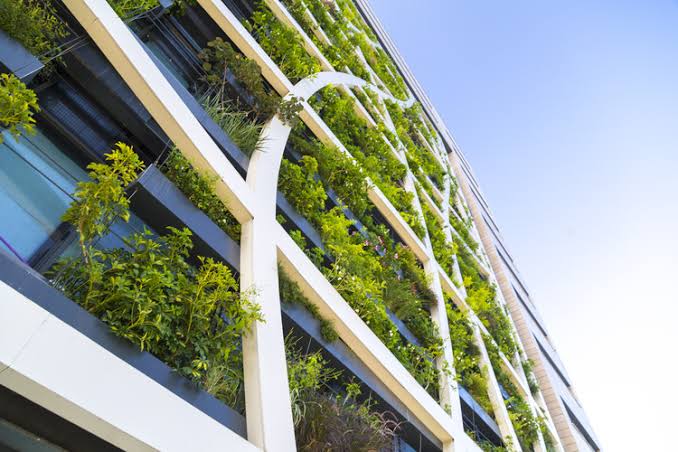Sustainable Building Practices: The Key to Future Construction Projects

Green construction can be defined as the process of creating and managing structures and the use of resources in a responsible manner. Since the building and construction sector is among the leading causes of climate change and the depletion of resources, it is imperative to incorporate sustainable practices moving forward. Sustainable buildings are, therefore, those that strive to minimize the cost of construction projects on the environment, bearing in mind the costs of energy and other resources, in addition to posing health risks and other economic disadvantages. In this article, the significance of sustainable building and the practices that construction companies and developers should adopt in future projects will be described.
Why is Sustainability Important in Construction?
Energy-related CO2 emissions from the building and construction sector take half of the total global share, which is 39%, with an increase of 2.5% annually. With the earth currently threatened by climate change as never before, the application of sustainable construction has perhaps become a necessity rather than a mere suggestion. Sustainable buildings have twofold advantages: they do not allow any undesirable environmental effects, and at the same time, they save much on energy and water usage while running the building. Additionally, embracing sustainability has social impacts such as; This shows that adopting sustainability has the following social impacts: Evidently, the integration of sustainable practices in construction projects should become a strategic direction for the global construction industry.
This should also apply to the Construction Estimating Companies that are focused on the cost estimates for the builders. The cost consultants therefore have a great responsibility to ensure that developers embrace green building design through the provision of accurate estimates of its costs.
Key Sustainable Building Practices
Here are some of the most vital sustainable building practices that should be integrated into any new construction project:
Energy Efficient Design
The energy performance should be optimized from the design phase. They found that the location or direction in which the building is facing, its window size and location, insulation level, heating, ventilation, and air conditioning systems, and types of lighting play a significant role in energy consumption. Developers must seek the services of professional CAD Drafting Services to design energy-efficient architectural and MEPF (mechanical, electrical, plumbing, and fire protection) solutions. Evaluating energy efficiency also requires energy modeling analysis to put a value, i.e., a number, on the improvements that are needed.
Water Conservation Systems
It is also worth mentioning that buildings consume about 20% of water globally. Replacing conventional faucets with low-flow ones and the same case with the flush system significantly minimizes water usage inside the home. Another aspect that applies natural resources is the rainwater harvesting technology, which has to be integrated into the building’s plumbing system. One of the most effective sustainable construction practices is the practice of efficient use of water.
Sourcing Sustainable Construction Materials
Manufacturing of building construction materials such as concrete, metals, and timber accounts for 10–30% of man-made carbon emissions. The most essential aspect is the acquisition of locally available and readily renewable structural materials that are low on carbon. Some of the green products that are made through the use of green building materials include recycled plastic lumber, naturally grown timber, green concrete, and non-VOC paints and adhesives.
Waste Reduction and Management
Construction and demolition waste constitutes 30–40% of the total solid waste generated in the world. Proper on-site waste management practices have to be followed, starting with waste storage and recycling, proper transportation of wastes, and authorized disposal of hazardous wastes. Selecting building designs and construction practices such as prefabrication that have low amounts of waste material is also effective.
Healthy Indoor Environments
Since people spend approximately 90% of their time indoors, the provision of adequately lit, thermally comfortable, and naturally ventilated built environments affects the health of people. In the planning phase, measures such as natural lighting, air quality, natural ventilation, off-gassing of building materials, and active design encouraging people to move should be incorporated into the building’s architecture and interior design.
The Future of Sustainable Construction
According to the World Green Building Council, buildings put up by 2060 will contribute to more than 50% of global new constructions within the next 40 years. The future cities are today, and as the global population shifts to urban residences in the decades to come, it is important to adopt green building design. By incorporating green design and construction in the projects, visionary developers can avoid costly alterations in the future while benefiting from decreased expenses in the long run for not only themselves but also the occupants of the buildings. It is high time for the building and construction industry to embrace sustainability. Using the architectural drawings from reputable CAD services firms and the right materials guided by accurate Construction Cost Estimator and cost estimating tools, leaders in the real estate business will be in a position to deliver the buildings of their green vision within our planet’s carrying capacity.
Conclusion
As it is, with the building sector being one of the most significant culprits behind climate change, incorporating green construction strategies is not an option—it is a necessity. Starting with energy modeling and efficiency optimization in architectural design up to the installation of efficient water conservation systems and procurement of environment-friendly construction materials, the developers are required to green and harden their projects. In addition to environmental advantages, sustainability in buildings leads to definite financial gains in terms of energy consumption and maintenance expenses. Construction estimating firms also have to offer the right-priced models within the framework of sustainability. The industry in today’s world has the opportunity and the responsibility to act towards green construction to create a prosperous future.



